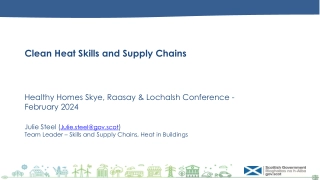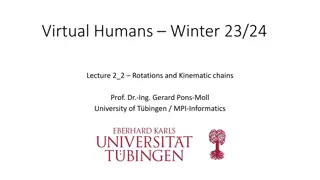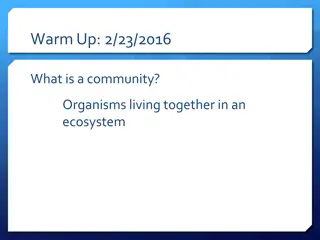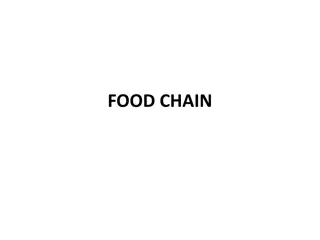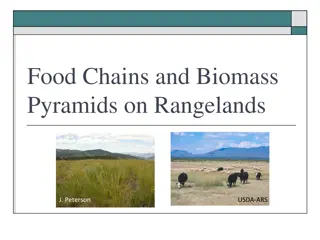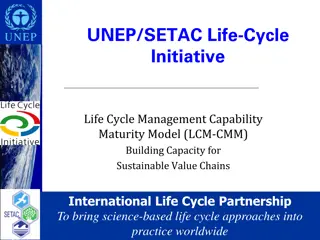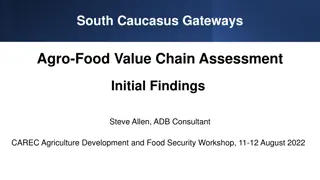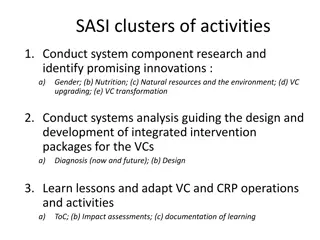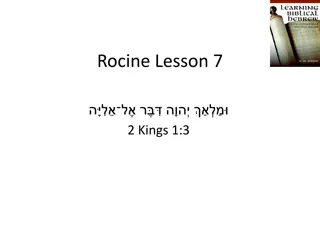Value Chains in Business
A value chain is a series of business processes within a firm that adds value to customers, the organization, suppliers, and other stakeholders. This includes primary activities like inbound logistics, operations, outbound logistics, marketing, sales, and services, as well as secondary or support activities like procurement, technology, and human resource management. Learn about how accounting information systems (AIS) and enterprise resource processes (ERP) are essential for tracking and managing these value-adding processes in an enterprise.
Download Presentation

Please find below an Image/Link to download the presentation.
The content on the website is provided AS IS for your information and personal use only. It may not be sold, licensed, or shared on other websites without obtaining consent from the author.If you encounter any issues during the download, it is possible that the publisher has removed the file from their server.
You are allowed to download the files provided on this website for personal or commercial use, subject to the condition that they are used lawfully. All files are the property of their respective owners.
The content on the website is provided AS IS for your information and personal use only. It may not be sold, licensed, or shared on other websites without obtaining consent from the author.
E N D
Presentation Transcript
Value Chain Textbook says A value chain is a chain of business processes of a firm That is more: . is a chain of a firm s business processes that can create value-add to the: Customer Organisation Even suppliers & other stakeholders So what is VALUE ? Customer Value Enterprise Value Supplier Value etc
Value Chain Diagram shows that the value chain ie the value adding business processes of a firm can be classified into functional areas, shown in the diagram Primary Activities Inbound logistics Operations Outbound logistics Marketing & Sales Service Secondary or Support Activities Procurement (Purchasing) Technology Human Resource Management Firm Infrastructure
An Example of Value Chain driven Work Functions in an Enterprise
Value Chain & Accounting Information Systems (AIS) An AIS records and controls every: internal operating transaction external business transaction That is created, edited, deleted and even displayed/reported (ie accessed) by staff, customers, suppliers & other stakeholders involved in executing the firm s business processes An AIS tracks the operating & business transactions of a firm s business processes, especially those relating to its value chain processes.
Value Chain, AIS & Enterprise Resource Processes (ERP) Past IT developers saw AIS solutions were about recording, processing and reporting the use & production of enterprise resources in operational and management work, and finally to product customer products & services They start calling these AIS as ERP systems Business processes consumes (uses) & generates (produces) enterprise resources, which eventually lead to the creation of saleable business products & services What are resources? Information Physical things Services AIS - Databases Later years, the IT developers understood the value and supply chain concepts and change older generations of ERP to include value chain related information & reporting AIS or SCM systems came about Information Resources Value Chain ERP Data, Process & Reporting Requirements System Design Structures of today s AIS
Roles of AIS as Enterprise Information Systems Informate (ie to inform decision makers) Automate AIS are designed to serve 3 purposes Value: Replace Human Labour with cheaper & higher quality non human labour Value: New information insights Outputs: Effective Decisions Made Outputs: Efficiency Gains Transform Value: Change competition drivers Outputs: Strategic outcomes achieved
Tutorial Q1 a) Explain the value chain for an appliance manufacturer b) Which (value) activities are most crucial (important) for value creation c) Rank the 5 value chain enhancing activities by degree of importance for this appliance manufacturer
Tutorial Q1 a) Explain the value chain for an appliance manufacturer b) Which (value) activities are most crucial (important) for value creation c) Rank the 5 value chain enhancing activities by degree of importance for this appliance manufacturer (b) & (c) Answer considerations Product Design Sourcing Manufacturing Shipping Marketing Product Warranty & Repairs
Q2 List & Explain the 3 ways that an AIS can add value to the firm Hint: Identify 3 types of AIS and analyse their system functionality to respond to the answer
Q2 List & Explain the 3 ways that an AIS can add value to the firm 3 types of AIS 1. CRM systems acquire new customers and retain existing ones; increase customer service quality and loyalty, upsell opportunities, etc 2. ERP systems lower the cost, coordinate & maintain timeliness of business processes and information processing 3. SCM systems Enable Just in Time Manufacturing and Inventory release at the right time & right place
Difference between ERP & SCM SCM systems are newer generations of ERP systems, with higher functional capabilities to process ERP processes and integrate a firm s value chain with those of its stakeholders (eg suppliers and (org) customers)
Q3 What type of financial information would be useful for both marketing & manufacturing operations? Sales Revenues & Pre-sales Costs By customer demogtraphics Raw material Costs Production Costs by product types, operating departments, asset-types, etc
General Tips for process Modelling for the First Time 1. Read the given document (eg a tutorial case study) 2. Look for key actions in the case story: The actions are usually liked to VERB-NOUN descriptions in the case write-up Create a list of these actions Restructure the list, to identify the different levels of functional decomposition 3. Using BPMN visual language (or any other process modelling language eg dataflow diagram or UML use case), draw the processes and their interaction-flows from the action list you identified earlier Make sure you follow the visual language grammar of the modelling method you are using. For example, BPMN require you to label processes in the form of a Verb and Noun, and all process modelling must include a start and end symbol. 4. A process model: Is always triggered by an event, which you can comment its description under the start symbol Always result in an ending-event, which you can comment its description under the end symbol 5. If process flows are timed, use the timer symbol to indicate the expecting timing in process flows and you can use the comment symbol to indicate specific time measures.
Process Modelling Activity 2 Park Car Drive Larry awoke to his alarm clock buzz. He got up and dressed for the day. Then, he ate a hearty breakfast of oatmeal, toast, orange juice and coffee. He grabbed his books and prepared to leave for school. Before he left home, he checked the weather. If it looked like rain, he put on his jacket and took his umbrella, and he drove to school. If he drove to school, he parked his car and walked to class. If he walked to school, he went straight to class. Car to school Take Umbrella Put on Jacket Rain likely X Get up from bed Dress clothes on Eat Grab Books Check Weather Breakfast Sunny Had oatmeal, toast, OJ & cofee Alarm sounds Walk to School Go to Class Trigger More descriptive details In class End State
Process Modelling Activity 3 include indication the people (actors) involved in executing Business Processes Tom, an employee in Monash Hardware Company wants to take a leave. He fills in the leave application form and then submits the form to Jerry, his manager for approval. Upon receipt of the application, Jerry will evaluate it in order to decide whether or not to approve the leave request. If the application is rejected, Jerry will inform Tom and the application process terminates. However, if the application is accepted, Jerry will inform Tom and the application process will then be managed by HR (Human Resource) and Tom takes the leave. People Roles can be represented by: 1. A job description 2. A functional division Depending what is described in the text documentation In case 3, there are 3 people roles: Tom the employee Jerry the manager HR Officer Represent as 3 swim-lanes We also know the company: Monash Hardware Company Represent as a swim-pool
Process Modelling Activity 3 include indication the people (actors) involved in executing Business Processes


